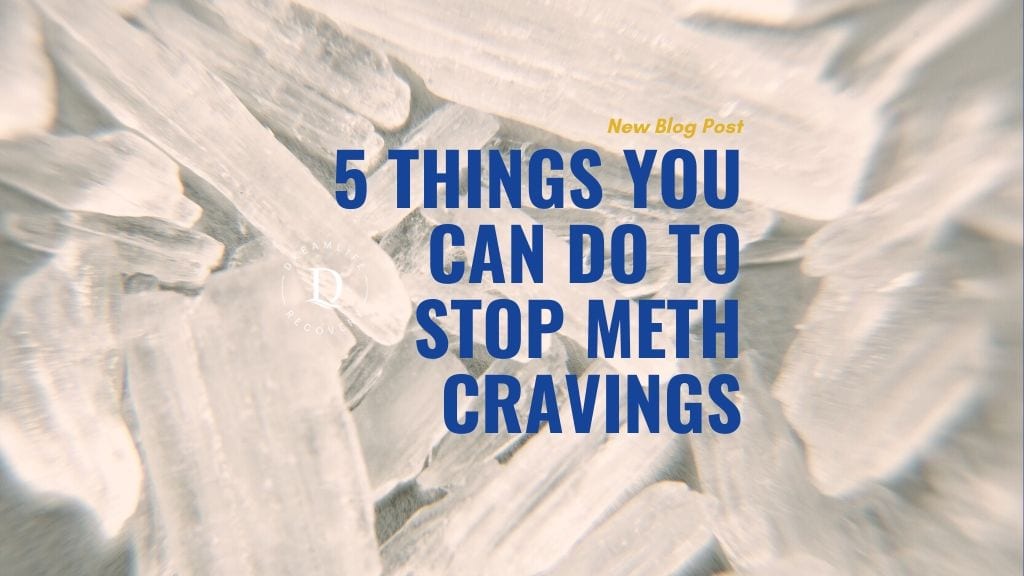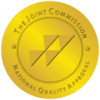

Written By
DreamLife Recovery5 Tips on How to Quit Meth and Deal With Withdrawal
If you are in addiction recovery, it’s normal to experience cravings. You can go days, weeks, or months without a craving and then boom, it hits you. The street version of methamphetamine—also known as meth, crystal meth, crystal, speed, and ice—is a highly addictive substance that essentially reprograms your mind and body to crave it even hours after your last use. That’s why it’s important to have tools in your back pocket to fight the meth cravings when they appear so you can keep moving forward on your road to recovery.
Common Meth Withdrawal Symptoms
Before we talk about how to reduce cravings, let’s talk about some symptoms you may experience during crystal meth recovery.
Methamphetamine is extremely addictive because it blocks the re-uptake of the feel-good neurotransmitter dopamine to receptors in the brain. At the same time, it causes the body to produce more dopamine, giving users the feeling of euphoria while high. Once you stop using, it’s common not to feel normal sensations of pleasure like you used to. Over time, meth users become dopamine deficient and develop a higher threshold for these natural feel-good neurotransmitters. That’s because the drug rewires users’ brains to require much greater levels of dopamine in order to feel normal, let alone happy. As a result, people in recovery may experience the following symptoms:
- Sadness or depression
- Feeling tired but unable to sleep
- Anger and irritability
- Nervousness or anxiety
- Inability to experience happiness
- Feeling “flat” or numb
- Increased appetite
- Lack of motivation
- Paranoia or psychosis
- An extremely strong urge to use
Studies from the U.S. National Library of Medicine found that methamphetamine users often exhibit cravings at least five weeks after final usage. Of all these withdrawal symptoms, the last one is perhaps the most dangerous for those in recovery. That urge to use often comes with a romanticized sense of what it felt like to be high and how being high again, just once more, would be worth the consequences. But it’s important to remember that no matter how strong the urge is, you’ve worked too hard on your recovery to turn back now.
Keep reading for ways to take control of your life and squash the cravings.
Ways to Prevent Meth Withdrawal Cravings Before They Hit
Here are some tried and true methods you can try to stave off those meth cravings during recovery. You can try one of these or all of them—you know yourself best!
Keep Stress in Check
By managing the stressors in your life, you’ll be less likely to turn to old, bad habits. When you feel stress coming on, draw from the coping skills and techniques you learned in your recovery process. Here are some you can try (even if you’re not feeling stressed):
- Listen to soothing music
- Close your eyes and take deep breaths
- Go for a walk or hike in nature
- Practice yoga
- Try a guided meditation
- Take your dog for a nice walk
- Visit your place of worship and pray
Try one, two, or all of the options above until you find what works best for you. And most importantly, remember that you are a work in progress and constantly evolving. You don’t leave recovery a perfect human—you leave as someone who has gained a new perspective and is working towards long-term goals. Have patience with yourself and find ways to relax and de-stress when you hit a rough patch.
Identify and Avoid Triggers
In recovery you probably identified some potential triggers or situations you think may result in you wanting to use again. It’s important to identify your triggers in order to avoid them and reduce the risk and intensity of cravings.
If you completed an inpatient program, you might discover new triggers that you didn’t consider once you are back in the real world. When you feel a strong urge to use, stop to think about what caused the craving. Did you run into a person from your old circle of friends? Did you drive by a place where you used in the past? Did you watch a movie that mentioned or depicted someone using meth? Did a smell, sound, song, place, or memory trigger this response? It’s important to know yourself and know your triggers in order to try to avoid them and reduce cravings. In the first few weeks and months, you may be more vulnerable to anything that reminds you of getting high, but over time, the cravings will subside.
Talk It Out

Don’t feel like you have to go through recovery alone. When cravings hit, be sure to reach out and talk about it with someone. Take advantage of the personal and professional support systems around you. Reach out to a friend who understands. Talk to a family member, a spouse or partner. Contact a counselor or, if you are in a 12-Step group, your sponsor. Keeping it to yourself can make you feel like a pressure cooker ready to burst, so let it out and release the tension. Try sitting down and making a list of people you know you can lean on. Explaining what you are feeling will help you to get distance from the craving and understand it better. Cravings are normal. You don’t have to go through this journey alone—you just need to know who you can count on for support when you really need it.
Find Healthy Distractions
If you’re feeling overwhelmed and the cravings start, distract yourself. Keep yourself busy with healthy distractions. Go for a walk or do the exercise you prefer, like running, swimming, or weight training. Practice yoga. Try meditating. Watch a movie or a show. Play an instrument or listen to music. Read a book, do a crossword puzzle, or play a card game with someone. Take a shower or a bath. Get a massage, manicure, or pedicure. Meet a friend for coffee. Go shopping. Cook a healthy meal at home. Play video games. Paint your bedroom. Start an herb garden in your backyard or on your balcony. Do something, anything you enjoy yourself busy and distract your mind from the craving.
Break Your Day into Small Intervals
When you’re experiencing a craving, getting through an entire day can feel impossible and daunting. Instead of dreading the entire day, break it up into 15 or 20-minute intervals for important mental health breaks. Choose one thing to do for 15 minutes and when that time is up, move on to the next one. Keep doing this throughout the day and it’ll be bedtime before you know it. If you can power through the worst few minutes of a craving, it will pass. The better you get at it, the sooner you can increase the intervals of time. Soon you’ll be counting entire days with no cravings!
Contact DreamLife Recovery to get help today if you or a loved one are struggling with addiction. Our expert team is here to support you in recovery with out meth addiction treatment program.
Our admission team is available 24/7 at (844) 402-3592.
Methamphetamine Recovery in Pennsylvania
Get Your DreamLife
Get Help TodayResources:
- Zorick, Todd et al. “Withdrawal symptoms in abstinent methamphetamine-dependent subjects.” Addiction (Abingdon, England) vol. 105,10 (2010): 1809-18
- NIDA. “What are the long-term effects of methamphetamine misuse?.” National Institute on Drug Abuse, 8 Sep. 2020, https://www.drugabuse.gov/publications/research-reports/methamphetamine/what-are-long-term-effects-methamphetamine-misuse Accessed 23 Feb. 2021.
- NIDA. “Methamphetamine DrugFacts.” National Institute on Drug Abuse, 16 May. 2019, https://www.drugabuse.gov/publications/drugfacts/methamphetamine Accessed 23 Feb. 2021.
- Methamphetamine (Meth) Addiction – Hazelden Betty Ford Clinic







